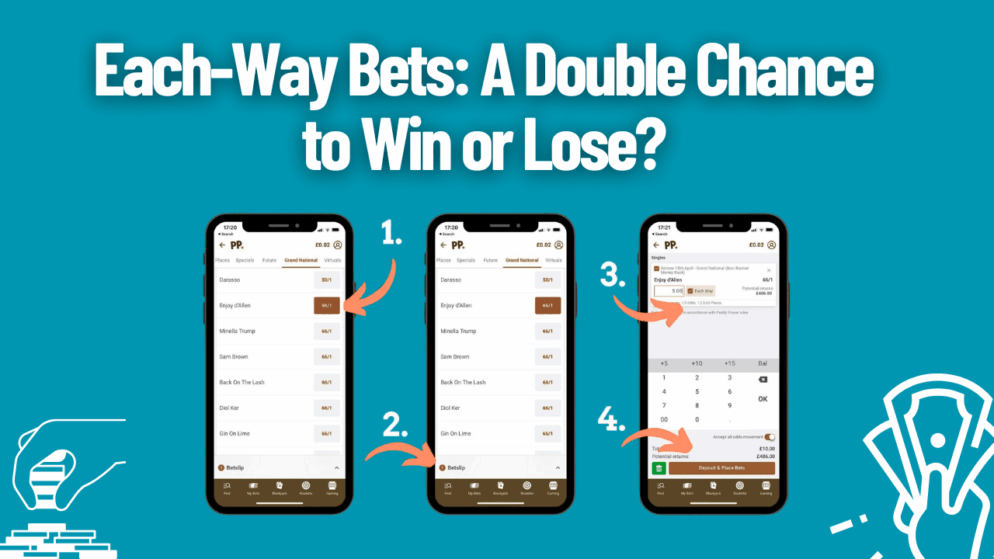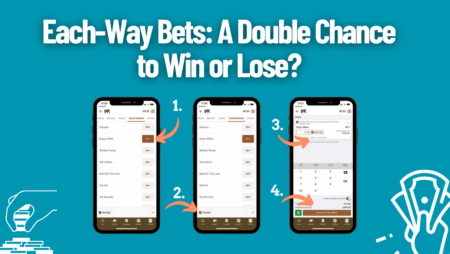

In the world of sports betting, few wagering options spark as much debate as the each-way bet. Marketed as offering “two chances to win,” this betting format promises to cushion potential losses while maintaining winning opportunities. But does this popular betting strategy truly offer value, or does it simply provide false comfort while diluting potential returns?
Understanding Each-Way Betting
An each-way bet essentially splits your stake into two equal parts: one backing your selection to win outright, and another backing it to “place” (finish in a predetermined position, typically the top three or four). If your selection wins, both parts of the bet pay out. If it only places, you receive the place portion at reduced odds, usually one-quarter or one-fifth of the win odds.
For example, a £10 each-way bet on a horse at 10/1 odds costs £20 total. If the horse wins, you collect both the win bet (£100 plus your £10 stake) and the place bet (typically £25 plus your £10 stake at quarter odds). If the horse finishes second or third, you only collect the place portion, effectively breaking even or making a small profit.
The Psychological Appeal
Each-way betting’s popularity stems largely from its psychological comfort. Bettors feel they’re getting “insurance” against total loss, particularly when backing longer-odds selections. This perceived safety net makes the strategy attractive to recreational punters who want excitement without the all-or-nothing pressure of win-only bets.
The format also appeals to those backing outsiders in competitive fields. When placing a punt on a 20/1 shot in a major horse race, the each-way option provides consolation if your selection runs a creditable race without winning.
The Mathematical Reality
However, the mathematics tell a different story. Each-way bets effectively force you to make two separate wagers, often at unfavorable terms. The place portion typically pays at significantly reduced odds while covering multiple outcomes that bookmakers have already factored into their profit margins.
Consider this: if you believe a selection has genuine winning chances, why dilute half your stake on a lower-return place bet? Conversely, if you’re uncertain about its winning prospects, why bet on it at all? This mathematical contradiction highlights the fundamental issue with each-way betting as a long-term strategy.
When Each-Way Makes Sense
Despite these concerns, each-way betting isn’t entirely without merit. It can provide value in specific scenarios, particularly in large fields where place terms are generous. Golf tournaments with 150+ players offering six or seven places at one-fifth odds can create positive expected value situations for skilled bettors.
Each-way betting also suits conservative approaches during major events. When backing multiple selections in prestigious races like the Grand National or Cheltenham Gold Cup, the place insurance can smooth variance while maintaining entertainment value.
The Verdict
Each-way betting represents neither a golden opportunity nor a complete trap, but rather a middle ground that often satisfies neither optimal strategy nor maximum entertainment. For serious bettors focused on long-term profitability, the format’s structural disadvantages typically outweigh its psychological benefits.
However, for recreational punters seeking extended involvement in events while limiting downside risk, each-way betting serves its purpose. The key lies in understanding exactly what you’re buying: not genuine insurance, but rather a compromise between risk and reward that costs extra while delivering reduced returns.
Rather than viewing each-way bets as “double chances,” consider them as exactly what they are: two separate bets with different risk profiles, packaged together for convenience and comfort rather than mathematical advantage.





